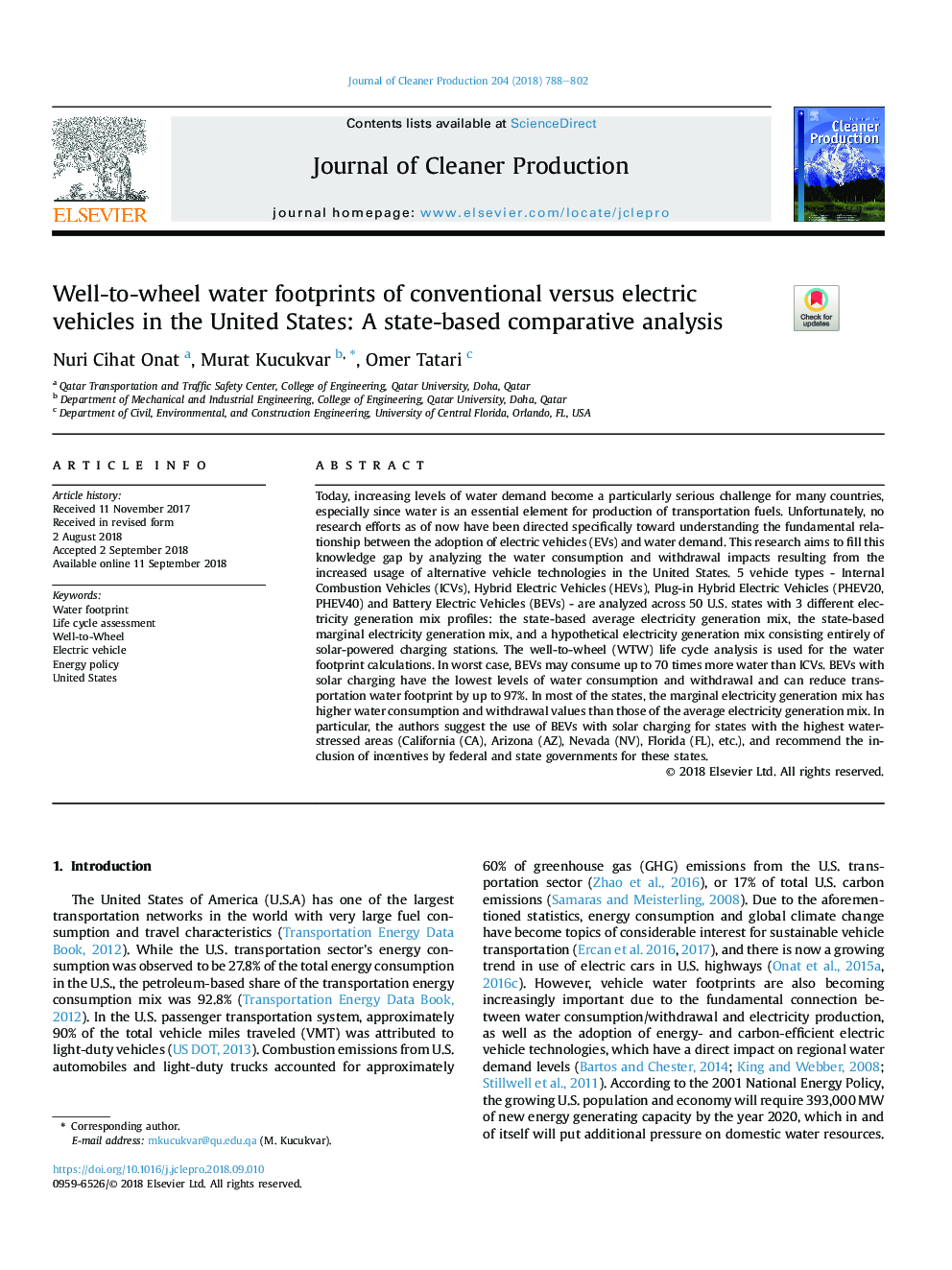| کد مقاله | کد نشریه | سال انتشار | مقاله انگلیسی | نسخه تمام متن |
|---|---|---|---|---|
| 10149272 | 1646720 | 2018 | 15 صفحه PDF | دانلود رایگان |
عنوان انگلیسی مقاله ISI
Well-to-wheel water footprints of conventional versus electric vehicles in the United States: A state-based comparative analysis
ترجمه فارسی عنوان
رد پای آب به وسیله وسیله نقلیه مرسوم در خودروهای الکتریکی در ایالات متحده: تجزیه و تحلیل تطبیقی مبتنی بر دولت
دانلود مقاله + سفارش ترجمه
دانلود مقاله ISI انگلیسی
رایگان برای ایرانیان
کلمات کلیدی
رد پای آب ارزیابی چرخه حیات، خوب به چرخ، خودرو الکتریکی، سیاست انرژی، ایالات متحده،
موضوعات مرتبط
مهندسی و علوم پایه
مهندسی انرژی
انرژی های تجدید پذیر، توسعه پایدار و محیط زیست
چکیده انگلیسی
Today, increasing levels of water demand become a particularly serious challenge for many countries, especially since water is an essential element for production of transportation fuels. Unfortunately, no research efforts as of now have been directed specifically toward understanding the fundamental relationship between the adoption of electric vehicles (EVs) and water demand. This research aims to fill this knowledge gap by analyzing the water consumption and withdrawal impacts resulting from the increased usage of alternative vehicle technologies in the United States. 5 vehicle types - Internal Combustion Vehicles (ICVs), Hybrid Electric Vehicles (HEVs), Plug-in Hybrid Electric Vehicles (PHEV20, PHEV40) and Battery Electric Vehicles (BEVs) - are analyzed across 50 U.S. states with 3 different electricity generation mix profiles: the state-based average electricity generation mix, the state-based marginal electricity generation mix, and a hypothetical electricity generation mix consisting entirely of solar-powered charging stations. The well-to-wheel (WTW) life cycle analysis is used for the water footprint calculations. In worst case, BEVs may consume up to 70 times more water than ICVs. BEVs with solar charging have the lowest levels of water consumption and withdrawal and can reduce transportation water footprint by up to 97%. In most of the states, the marginal electricity generation mix has higher water consumption and withdrawal values than those of the average electricity generation mix. In particular, the authors suggest the use of BEVs with solar charging for states with the highest water-stressed areas (California (CA), Arizona (AZ), Nevada (NV), Florida (FL), etc.), and recommend the inclusion of incentives by federal and state governments for these states.
ناشر
Database: Elsevier - ScienceDirect (ساینس دایرکت)
Journal: Journal of Cleaner Production - Volume 204, 10 December 2018, Pages 788-802
Journal: Journal of Cleaner Production - Volume 204, 10 December 2018, Pages 788-802
نویسندگان
Nuri Cihat Onat, Murat Kucukvar, Omer Tatari,
